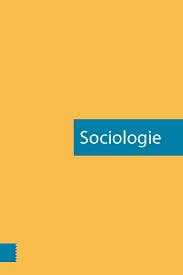Abstract
Studies by Savage et al. (2013) and Vrooman, Gijsberts and Boelhouwer (2014) introduce new class typologies that combine Bourdieu’s work with latent class analysis. This paper identifies this new research approach as Bourdieusian latent class analysis. We discuss the role of these studies within the social class debate and we review the merits and limitations of this approach. In addition, we show how the class structure of Rotterdam can be empirically established by studying the distribution of economic, social and cultural capital. We use the Neighbourhood Profile data (N = 14,040; 71 neighbourhoods) to develop a class typology that includes eight social groups. This class typology complements conventional indicators of neighbourhood socioeconomic status and can be used to study ‘social mix’ and gentrification.
How to Cite:
Custers, G. & Engbersen, G., (2019) “Bourdieu in de buurt: Sociale klassendebat en de klassenstructuur van Rotterdam”, Sociologie 15(2), 117–147. doi: https://doi.org/10.5117/SOC2019.2.001.CUST
Downloads:
Download PDF
View PDF
189 Views
48 Downloads


